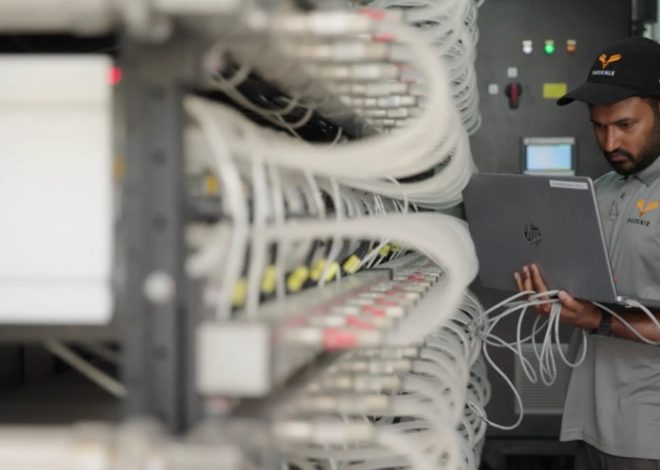
Are DOGE’s cuts are sabotaging America’s AI edge?

The next is a visitor publish and opinion from Ahmad Shadid, Founding father of O.xyz.
Beneath the flimsy pretext of effectivity, the Division of Authorities Effectivity (DOGE) is gutting its workforce. An impartial report means that DOGE has slashed round 222,000 job cuts in March alone. The cuts are hitting hardest in areas the place the U.S. can least afford to fall behind — synthetic intelligence and semiconductor growth.
Now the larger query is past gutting the workforce – it’s that Musk’s Division of Authorities Effectivity is utilizing synthetic intelligence to snoop by means of federal workers’ communications, trying to find any whiff of disloyalty. It’s already creeping across the EPA.
DOGE’s AI-first push to shrink federal companies seems like Silicon Valley gone rogue—grabbing knowledge, automating features, and speeding out half-baked instruments just like the GSA’s “intern-level” chatbot to justify cuts. It’s reckless.
In addition to that, in accordance with a report — DOGE “technologists” are deploying Musk’s Grok AI to watch Environmental Safety Company workers with plans for sweeping authorities cuts.
Federal employees, lengthy accustomed to e-mail transparency on account of public information legal guidelines, now face hyper-intelligent instruments dissecting their each phrase.
How can federal workers belief a system the place AI surveillance is paired with mass layoffs? Is the USA quietly drifting in the direction of a surveillance dystopia, with synthetic intelligence amplifying the risk?
AI-Powered Surveillance
Can the AI mannequin educated on authorities knowledge be trusted? In addition to that, utilizing AI into a fancy forms invitations basic pitfalls: biases—points GSA’s personal assist web page flags with out clear enforcement.
The growing consolidation of data inside AI fashions poses an escalating risk to privateness. In addition to that, Musk and DOGE are additionally violating the Privateness Act of 1974. The Privateness Act of 1974 got here into impact throughout the Watergate scandal which aimed to curb the misuse of government-held knowledge.
In line with the act — nobody, not even the particular authorities workers—ought to entry company “techniques of information” with out correct authorization below the legislation. Now the DOGE appears to be violating the privateness act within the identify of effectivity. Is the push for presidency effectivity value jeopardizing People’ privateness?
Surveillance isn’t nearly cameras or key phrases anymore. It’s about who processes the alerts, who owns the fashions, and who decides what issues. With out sturdy public governance, this route ends with corporate-controlled infrastructure shaping how the federal government operates. It units a harmful precedent. Public belief in AI will weaken if folks imagine choices are made by opaque techniques outdoors democratic management. The federal authorities is meant to set requirements, not outsource them.
What’s at stake?
The Nationwide Science Basis (NSF) lately slashed greater than 150 workers, and inner stories recommend even deeper cuts are coming. The NSF funds crucial AI and semiconductor analysis throughout universities and public establishments. These applications assist all the things from foundational machine studying fashions to chip structure innovation. The White Home can also be proposing a two-thirds funds lower to NSF. This wipes out the very base that helps American competitiveness in AI.
The Nationwide Institute of Requirements and Know-how (NIST) is going through related injury. Almost 500 NIST workers are on the chopping block. These embody a lot of the groups chargeable for the CHIPS Act’s incentive applications and R&D methods. NIST runs the US AI Security Institute and created the AI Danger Administration Framework.
Is DOGE Feeding Confidential Public Information to the Personal Sector?
DOGE’s involvement additionally raises a extra crucial concern about confidentiality. The division has quietly gained sweeping entry to federal information and company knowledge units. Experiences recommend AI instruments are combing by means of this knowledge to establish features for automation. So, the administration is now letting personal actors course of delicate details about authorities operations, public providers, and regulatory workflows.
It is a threat multiplier. AI techniques educated on delicate knowledge want oversight, not simply effectivity objectives. The transfer shifts public knowledge into personal palms with out clear coverage guardrails. It additionally opens the door to biased or inaccurate techniques making choices that have an effect on actual lives. Algorithms don’t change accountability.
There isn’t any transparency round what knowledge DOGE makes use of, which fashions it deploys, or how companies validate the outputs. Federal employees are being terminated primarily based on AI suggestions. The logic, weightings, and assumptions of these fashions will not be out there to the general public. That’s a governance failure.
What to anticipate?
Surveillance doesn’t make a authorities environment friendly, with out guidelines, oversight, and even primary transparency, it simply breeds concern. And when synthetic intelligence is used to watch loyalty or flag phrases like “variety,” we’re not streamlining the federal government—we’re gutting belief in it.
Federal employees shouldn’t need to marvel in the event that they’re being watched for doing their jobs or saying the improper factor in a gathering.This additionally highlights the necessity for higher, extra dependable AI fashions that may meet the precise challenges and requirements required in public service.


